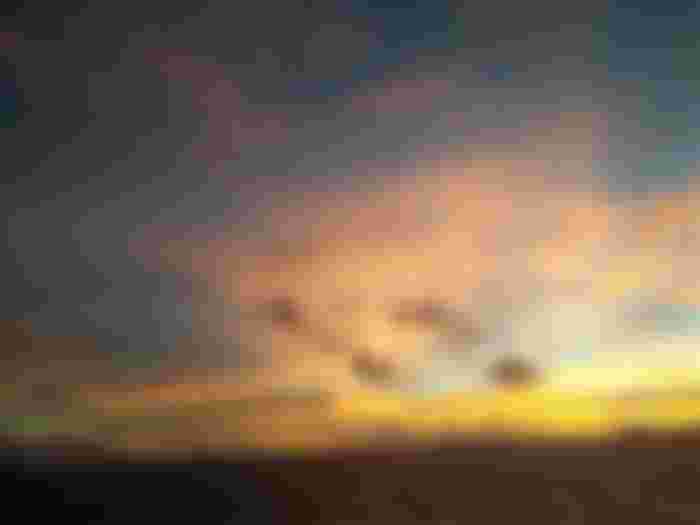My Sky
Since childhood, many may have wondered why sky is blue and not any other color. This is not a strange thing because when the sky is clear the color can turn orange in afternoon. To begin to understand why sky is blue, we can start with main light source in the solar system, namely the Sun. In reality, sunlight always appears white, even though that white light is made up of all colors of visible rainbow, from red to purple.

On its way through atmosphere, sunlight is absorbed, reflected, and transformed by various elements, compounds, and particles.

Color of sky depends on the wavelength of light
Launching the Encyclopedia Britannica page, the color of the sky is very dependent on the wavelength of the incoming light, but air molecules (mostly nitrogen and oxygen) and dust particles also play an important role.
Shorter wavelengths of light, such as violet and blue, are more easily absorbed by air molecules than light of longer wavelengths (i.e. red, orange, and yellow in the spectrum). Hi
All of that light generally travels in a straight line, unless something gets in the way and does one of the following:
-Reflect it (like a mirror)
- bend it (like a prism)
- scatter them (like gas molecules in the atmosphere)
Creating Blue Color in the Sky In NASA's site, spaceplace.nasa.gov, explained that sunlight reaches Earth's atmosphere and is scattered in all directions by all gases and particles in the air.

Blue light is scattered in all directions by tiny air molecules in Earth's atmosphere. Blue is scattered more than other colors because it travels as shorter and smaller waves.
That's why the sky often looks blue. Even though the emitted air molecules are purple and blue light, the human eye is more sensitive to blue light than purple light.
The color of the sky changes at dusk
When the sun is near the horizon at dawn and dusk, sunlight hits the atmosphere at a more oblique angle. Thus these rays must travel a greater distance through the atmosphere than at noon. As a result, there are more nitrogen and oxygen molecules and other particles that can block and scatter incoming sunlight.

During this long journey, incoming radiation in the shorter blue and violet wavelengths is mostly filtered out. So the effect of this wavelength on the color of the sky is reduced.

What remains are longer wavelengths, and some of these rays hit dust and other particles near the horizon and water droplets that form clouds.
This can then create the red, orange, and yellow colors in the sky at sunrise and sunset.

All photos from private gallery






Exactly, the color of the sky depend the wavelength. Anyway, sky is much more meaningful whatever color it is.